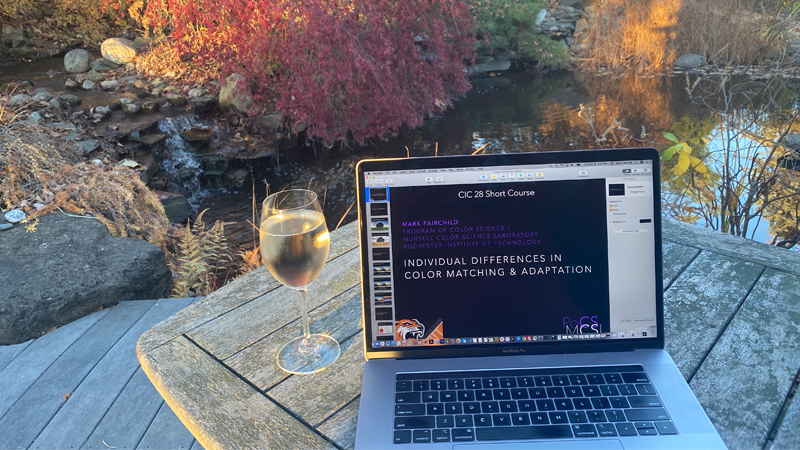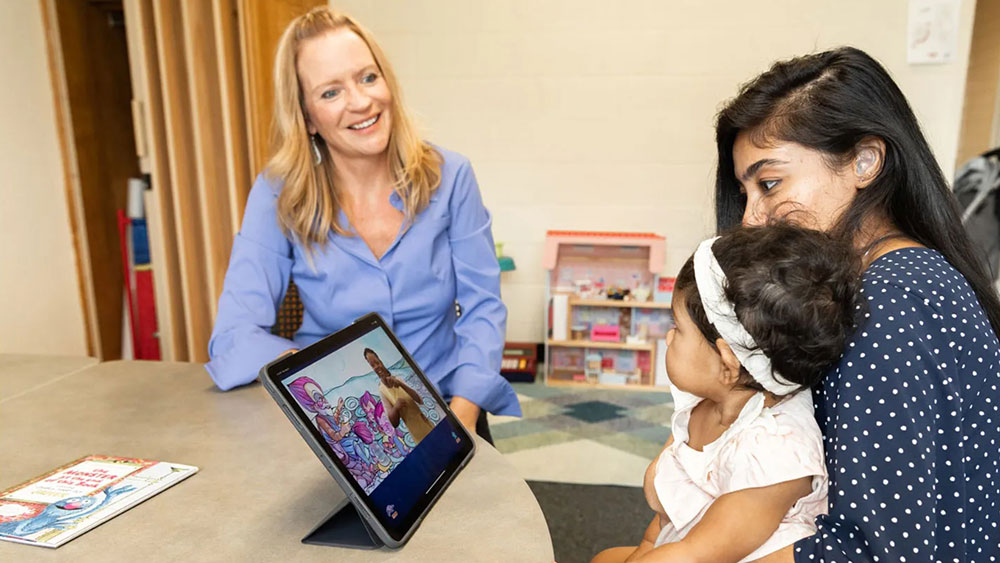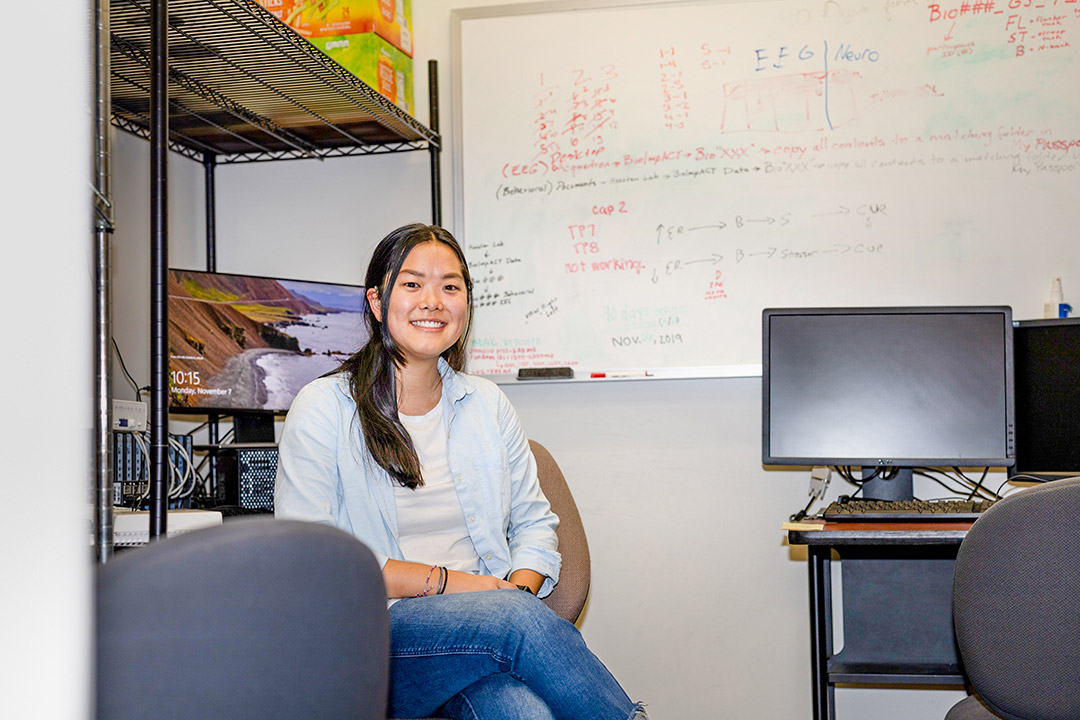A Bright Future at RIT for Students Interested in Neuroscience
RIT researchers built a degree offering students a foundation in neuroscience concepts and research while taking advantage of the university’s strengths in color, imaging science, artificial intelligence, and biobehavioral science.
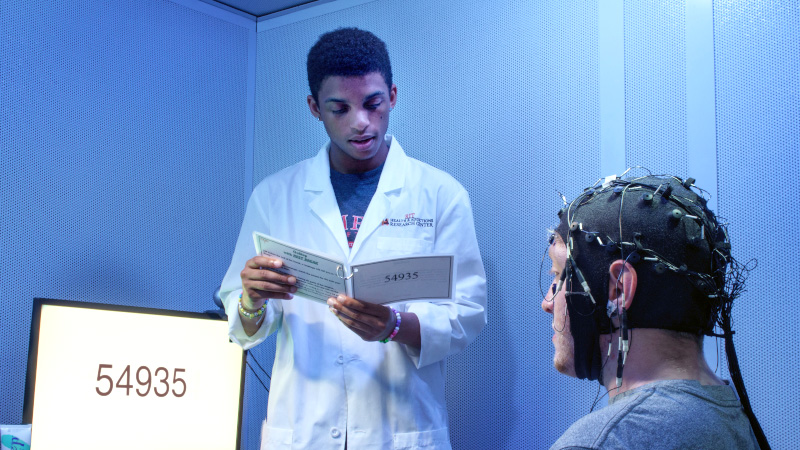
A bright future lies ahead for neuroscience research as advances in technology have the potential to unlock the secrets of the human brain and consciousness. Scientists are using new technologies to explore the brain and make groundbreaking discoveries in medicine, artificial intelligence, and the social sciences. In response to an increasing interest among students, RIT researchers have built a BS degree that provides students with a solid grounding in neuroscience concepts and research to prepare graduates for a variety of careers.
In a collaboration between the College of Science and the College of Liberal Arts, RIT faculty created a multidisciplinary neuroscience BS degree that meets the needs of both students and faculty. The program builds on RIT's strengths in teaching applied sciences as well as the existing robust neuroscience research programs. As a scientific and applied field, neuroscience encompasses a wide range of topics. Students at RIT benefit from having faculty involved in neuroscientific research across the university in areas such as perceptual and cognitive neuroscience, computing, color science, biomedical science, imaging science, and engineering. The variety of research gives students a comprehensive understanding of the field from different perspectives. In addition, students learn how neuroscience research is carried out including the day-to-day of conducting experiments that other undergraduate programs do not provide.
Featured Neuroscience Research at RIT

Integrated Sciences Academy Research Faculty Elena Fedorovskaya specializes in neuroscience and is the Director of the neuroscience program at RIT. “When I was a student, I asked my advisor if I could participate in a study analyzing brain signals to assess people's thoughts and feelings. I've always wanted a deeper understanding of human perception and cognition. While we still had a long way to go, I entered a doctoral program in psychophysiology to study the effects of brain disorders on color perception." As part of her doctoral research, Fedorovskaya studied color vision in patients with brain lesions and electrophysiological stress responses.
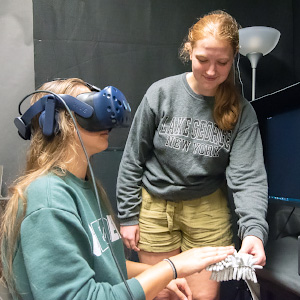 “The focus of my current research studies how people perceive objects with differing visual appearances and textures by combining information from different senses, such as vision and touch. To understand human responses to stimuli in virtual and augmented reality environments, we use psychophysics, electroencephalography, and behavior recordings. Examples of these behavioral measures include reaction time, verbal responses and eye movements. With this knowledge, immersive experiences can be developed in a variety of fields, including entertainment, gaming, education, and health.”
“The focus of my current research studies how people perceive objects with differing visual appearances and textures by combining information from different senses, such as vision and touch. To understand human responses to stimuli in virtual and augmented reality environments, we use psychophysics, electroencephalography, and behavior recordings. Examples of these behavioral measures include reaction time, verbal responses and eye movements. With this knowledge, immersive experiences can be developed in a variety of fields, including entertainment, gaming, education, and health.”
Regarding the RIT neuroscience BS degree, Fedorovskaya says, “RIT is an excellent choice for students who want to study brain and nervous system functions. Neuroscience deals with the anatomy, physiology, biochemistry, and molecular biology of the nervous system as well as its relationship to behavior and cognitive functions. In neuroscience, there are many subfields and specializations for students to explore and study more deeply, including cognitive neuroscience, developmental neuroscience, behavioral neuroscience, clinical neuroscience, and computational neuroscience.”
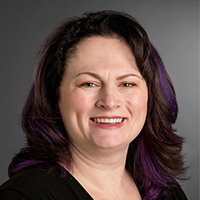
Rebecca Houston, associate professor in the department of Psychology, is part of the original core committee that developed the proposal for the neuroscience program. “It is my belief that students will leave the program with a solid foundation in neuroscience, as well as a deeper understanding of how neuroscience research actually works. Further, the program provides students with coursework and opportunities that will prepare them for careers in a variety of fields.”
When she was a psychology major undergrad, Dr. Houston fell in love with the research process and became fascinated by the brain-behavior relationship. Since then, she has devoted herself to working with neuroscience.
“While in graduate school, I worked with human study participants and developed expertise in EEG/ERPs and neuropsychological assessment methods that I now use. As a researcher, I am primarily interested in understanding the neurocognitive substrates of psychopathology, particularly those behaviors and symptoms that involve a lack of impulse control, such as addictions and aggressive behavior. I have also been involved in research examining neurocognitive processing in relation to psychological disorders such as depression, trauma, and personality disorders.”
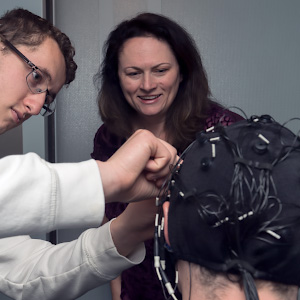 In her current research, Dr. Houston compares neurocognitive mechanisms of impulse control in young adults with varying histories of binge drinking alcohol and cannabis use.
In her current research, Dr. Houston compares neurocognitive mechanisms of impulse control in young adults with varying histories of binge drinking alcohol and cannabis use.
"Our overall goal is to gain a deeper understanding of whether neural markers can be used to identify individuals who are likely to develop substance use disorders. This study involves the application of event-related brain potentials. We can use an electroencephalographic (EEG) component that provides a sensitive indicator of neural activity to show us stimulus and response processing. In addition, we utilize traditional neuropsychological assessment methods to assess executive functioning. In addition to assessing the likelihood of developing a disorder, we want to better tailor interventions and treatments for young adults who are experiencing problematic substance use."
In order to succeed in neuroscience, Dr. Houston stressed the importance of strong critical thinking skills, reasoning skills, and scientific writing skills. Furthermore, students will need to become comfortable with professional social interactions, such as presenting and discussing their research. Students interested in biology, chemistry, psychology, and other sciences will likely enjoy further exploring neuroscience.

“There is a great deal of interest among high school students in understanding how the brain works,” according to Susan Farnand, assistant professor and graduate color science program director at RIT. “It is also evident that employers are very interested in hiring people with a basic understanding of neuroscience. With RIT's strong position in this space, students can develop a solid foundation for a number of careers.”
Dr. Farnand conducts research in the area of Color Perception and has contributed to the establishment of RIT's neuroscience program. “I have conducted research to understand human perceptions of the quality of images in print, on smartphones, and on television. Additionally, I am interested in how individual observers perceive color differently.”
Farnand’s interest in the visual system began when she first took a Human Vision course as part of her imaging science MS degree with Dr. Mark Fairchild. Since that time, she has maintained a strong interest in research that seeks to explain how humans perceive color. She has published several articles in the area of color science, including research on color perception.
“The neuroscience BS degree requires students to demonstrate general curiosity and an interest in multidisciplinary learning. The collaboration between the College of Science and the College of Liberal Arts, as well as participation from the Golisano College of Computing and Information Sciences and the National Technical Institute for the Deaf, will benefit students by providing a broad perspective from an array of researchers active in a variety of aspects of neuroscience."









